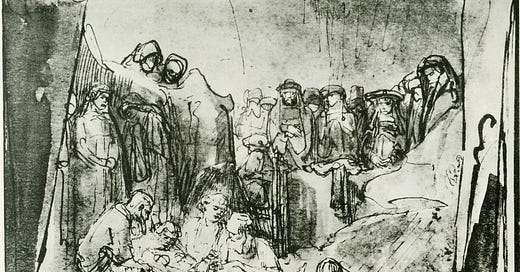I owe a great deal to Bart Ehrman. His books and podcast shaped my understanding of the historical Jesus more than any other source. I didn’t accept everything he said right away, but over time I found myself agreeing with more and more of it. When it came to Jesus’ burial, I came to believe that the tomb story was likely invented. Ehrman’s case seemed strong, and I didn’t yet have the broader scholarly perspective to see how contested that view actually is. It wasn’t until I started reading more widely that my confidence in his argument began to shift.
Ehrman convinced me, for a long time, that Jesus was never buried in Joseph of Arimathea’s tomb. He argued it was far more likely Jesus was quickly tossed into a shallow grave or left to be eaten by scavengers. I now disagree with that view—but I still think it’s a solid theory. It might be right.
Here’s a quick summary of why he thinks that:
That’s what usually happened to crucified victims. We know that with a fair amount of confidence.
Paul recites an early creed that says Jesus was “buried,” but it doesn’t mention a tomb.
The Gospel accounts don’t line up.
If he was buried in a known tomb and didn’t rise, people could have checked. So if the movement got off the ground, maybe they didn’t know where the body was.
And of course, people don’t rise from the dead.
That’s the basic outline of the case. And for a while, I found it persuasive.
But I think that’s wrong—for several reasons.
To begin with, although the Gospels are the only ancient sources that describe a crucified man being taken down and given a proper burial, that’s not as suspicious as it might seem. We don’t have many detailed accounts of crucifixion at all. It wasn’t the kind of thing people wrote about in depth. Jesus might have been an exception—but so what?
Second, maybe the creed Paul recites was shortened. Maybe it didn’t include every detail. We don’t even know if we have the full creed, or if it was formalized in that form. The fact that it says he was “buried” at all implies some known resting place. I find it a stretch to dismiss the Gospel tradition simply because Paul didn’t elaborate on it in that particular moment.
Third, while the Gospels are full of supernatural claims, the basic structure of the story remains internally consistent. I don’t think the core events were fabricated. I lean toward the view that the skeleton of the narrative is real (Jesus was crucified, his body was claimed, he was buried) while the miraculous details grew around that core. That’s how I approach the Synoptics as a whole.
Fourth, and this was once my biggest objection: if there really was a tomb, why didn’t it become a holy site? Why don’t we hear more about Christians visiting it? And then, wouldn’t the presence of the body disprove the resurrection?
Maybe not. The tomb itself may not have mattered much to the earliest Christians. If their belief in resurrection was more spiritual than physical (as many scholars suggest) then the state or location of the body may have been irrelevant to them. By the time the disciples returned to Jerusalem, the body may have decomposed beyond recognition.
Also, Joseph of Arimathea wasn’t a Christian and he was powerful. It’s entirely plausible he didn’t allow the tomb to become a shrine. It may have been sealed off, forgotten, or repurposed. Whatever the case, it’s not strange that the tomb never became a pilgrimage site. What mattered to the early believers wasn’t the location of the body, but the presence of the risen Christ.
And that brings me to my final point—maybe the most important one.
The question that really began to change my mind was this: why are the Marys and Salome included in what’s supposedly a made-up story? And I don’t just mean the usual argument about them being women. I mean that, up to that point in the narrative, they’re relatively minor figures. If this was all fabricated, why choose them? Did they invent the story? Did they go looking for the body, couldn’t find it, and over time the story evolved? Maybe. But it started to seem less likely to me.
And then there's Joseph of Arimathea himself. He’s also an insignificant figure. He appears out of nowhere, plays a crucial role in the burial, and then disappears from the tradition. If the story were invented, why specifically Joseph of Arimathea?
That’s when I started to wonder: what’s more plausible? That this tomb story was crafted out of thin air, using marginal characters with no real theological capital? Or that it reflects something historical (something ordinary and unspectacular) that later became wrapped in theological meaning?
The more I think about it, the more I lean toward the latter.





Why do you not believe this account? Disbelief of the burial account and resurrection renders the whole Bible dubious. You may as well surrender to the darkness and take cyanide. Hopeless and without joy. I am sad for you.